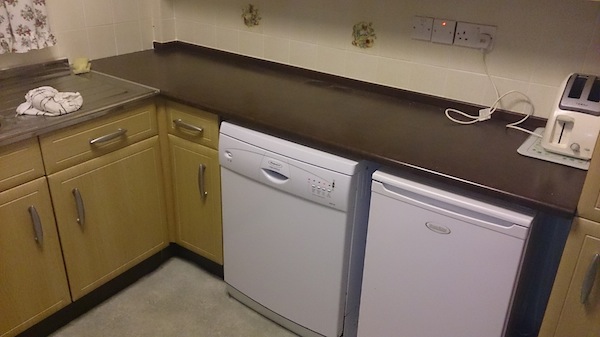
Welsh heroes and heroines who helped shape Wales
The stories of those who shape the nation are a massive part of history and there are plenty of great Welsh heroes and heroines who helped shape the country.
In celebration, Cadw, the Welsh Government’s historic environment service, has commissioned The Heroes and Heroines of Wales story collection to bring to life and reveal the drama and excitement behind Cadw and Wales’ most loved historic sites.
The seven short stories are available to download from the Cadw website.
In addition to learning about Wales’ rich historic past, once you’ve read the stories you will almost certainly be inspired to join the more than 2.5 million visitors who visit Cadw’s 128 sites annually, to relive the dramatic stories behind the monuments.
Each story includes a Follow the Footsteps guide to encourage visitors to explore sights and structures at the Cadw locations referenced and discover Welsh heroes and heroines.
One of the most striking examples of a Welsh hero is William Burges. Said to be the most gifted and well-loved architect and designer of his time, his looks were such that his friends fondly called him ‘Ugly Burges’. He also had poor eyesight.
Despite this, he went on to design the most beautiful, romantic places, including the fairytale palace of Castell Coch on the outskirts of Cardiff.
Rick Turner, an inspector of ancient monuments who works for Cadw, says that Burges’ is a story worth telling.
“I think Burges was an extraordinary man. He was said to be full of good humour, impish, inexhaustible, workaholic, genius and mischievous.
“He had an unusual architectural career in the sense that it took him a long time to get started. He had a degree of private income – his father was an extremely successful marine engineer.”
Although Burges carved out his own place in architecture and worked on cathedrals, universities and stately homes, it wasn’t until he met with the John Patrick Crichton-Stuart, third Marquess of Bute, that the magic truly began.
“When he met the Marquess of Bute in 1865, Burges was 38 and had a very wide experience of travel. He’d travelled all over Europe and into Turkey, to Istanbul in particular, so he had an amazing knowledge of medieval architecture.
“In the Marquess of Bute, who was around 18, he found a patron who was interested in the Middle Ages, but who could commission somebody to put their joint dreams of the Middle Ages into reality. It was an incredibly fruitful partnership.
“The Marquess helped to shape Burges’ ambitions and drive to help realise the buildings, and they clearly enjoyed the process, that’s what comes out of letters and documents – how much fun they had realising their dreams of Cardiff Castle first and then Castell Coch.”
With the Marquess’ interest and funds, the pair worked together to unveil two of the most striking buildings in South Wales. But although the Marquess was the money and Burges was, largely, the creativity, they were, Rick says, very definitely a partnership.
“The Marquess was a great student of languages and medieval religions. He was interested in local Welsh saints, and he was a very scholarly fellow.
“He was not of the same vivacious personality as Burges, but he obviously enjoyed spending time with Burges, and you get the sense of that interaction when Burges makes his proposals and how the Marquess reacts and, later on, when his wife becomes involved, how they react to the proposals.”
A letter records Lady Bute, wife of his patron, writing to Burges, ‘Dear Burges, ugly Burges, who designs lovely things…’ which offers a sense of the closeness between them. Rick says together they helped to stabilise some of the Burges designs.
“Sometimes their notes would make the buildings more functional and more realisable than Burges may have offered, and you see that interaction between the client and the architect.
“With Castell Coch, we have access in Cardiff Castle to a set of working drawings of the building. You can see on the drawings how things have been changed and corrected – red lines are struck through and so on, so you can see this interplay between the two.”
Money was no object, and working with the Marquess enabled Burges to use the best craftsmen and artists that he could to work on his buildings.
But while the rich creative partnership between the two yielded stunning examples of Gothic architecture, the end came all too soon.
“Things did change in 1881 when Burges died. At that point Cardiff Castle was largely complete, but as for Castell Coch, the building was there, and two of the rooms had been decorated but the rest of the project was carried on by Burges’ assistant after he died.
“I think a bit of the spark went out of it. It didn’t seem quite as much fun as it had been when the two of them were sparking ideas off each other, but it doesn’t take away from the final building.”
Burges’ detailed working drawings and written instructions for everything enabled craftsmen to continue work on Castell Coch. He clearly is one of the Welsh heroes and heroines. Ten years later, the Gothic-style castle was completed. It survives today as a memorial to the eccentric genius William Burges, a man described by the Marquess of Bute as “soul-inspiring”.
Welsh heroes and heroines
As well as William Burges, six other Welsh heroes and heroines who helped shape Wales have been celebrated in the new story collection.
Saint David
St David was a monk believed to have lived in the 6th century, who spread the message of Christianity, and encouraged his followers to care for the natural world. He is credited with many miracles, the most famous being when he raised a hill beneath his feet so that the crowds could hear him preach. By the 12th century, more than 60 churches in Wales had been dedicated to him. he has to be one of the most significant of Welsh heroes and heroines.
Branwen ferch Llyr
An old Welsh legend from a collection of stories called the Four Branches of the Mabinogi. When Branwen ferch Llyr, sister of Bendigeidfran the king of Britain, married Matholwch, king of Ireland, it should have brought peace to the two warring countries. But Branwen’s evil half-brother wasn’t happy with the match. He set out to ruin the marriage, but ended up bringing death and destruction to his own family…
Gwenllian
Gwenllian was a brave and beautiful Welsh princess who died trying to save her country from Norman invaders. Her story is set over 870 years ago in the kingdom of Deheubarth (south-west Wales). England and parts of Wales had been conquered by the Normans, but the Welsh people fought back for their land and freedom. It was a time of endless struggle and bloodshed.
Llywelyn the Great
Llywelyn ap Iorwerth, known as ‘Llywelyn the Great’ was one of the most famous and powerful of the Princes of Gwynedd. He was a brave warrior, but also a shrewd diplomat. By the time of his death, Llywelyn had united most of native Wales under his rule. During his reign, Llywelyn built a chain of imposing castles to defend the borders of Gwynedd and the heartland of Snowdonia.
Santes Dwynwen
This legend is set in Wales in the 5th century. Princess Dwynwen was the beautiful daughter of the king of south Wales. When she was forbidden to marry the man she loved, she ran away and became a nun. She devoted the rest of her life to helping other lovers find happiness and is now the Welsh patron saint of love.
The chemists of Blaenavon
Sidney Gilchrist Thomas was fascinated by chemistry. In 1876, he began working on secret experiments at Blaenavon Ironworks with his cousin, Percy Carlyle Gilchrist. This led to a discovery that changed the steel manufacturing industry worldwide.












